Visit Cortona, Tuscany's hilltop gem with Etruscan roots, Renaissance art, and stunning Val di Chiana views, as seen in 'Under the Tuscan Sun'.
Read more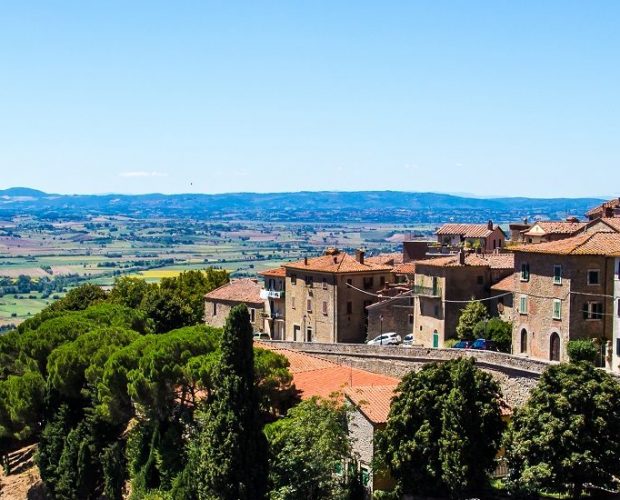
EXPLORE ALL OUR TUSCANY WINE REGION GUIDES
Last updated: May 6, 2024
At first glance, no secrets are left to discover in rural Tuscany. After all, how can a region that receives over 40 million tourists per year have anything left to hide? Yet, while the landscape of southwestern Tuscany is as stunningly beautiful as anything you’ll discover in Chianti Classico, the area is curiously (and gloriously) bereft of visitors. Nowhere is this more true than in the undulating vineyards of Montecucco – Tuscany’s last undiscovered wine paradise.
However, Montecucco is no stranger to the vine. The Etruscans ‘colonized’ the foothills of the Monte Amiata, situated to the northeast of Grosseto in the Upper Maremma province, in the pre-Roman era to grow vines and other crops on these fertile slopes. The Latin conquerors enthusiastically continued this tradition – Roman legions consolidated their hold over the Italian Peninsula in 264 BC. Unfortunately, after the Western Empire collapsed in the 5th century due to internal and external pressures, Montecucco and its vines faded into obscurity. A modest revival, driven by rising prosperity in central Italy, only occurred in the 20th century; winegrowers celebrated the 25th anniversary of holding DOC status last year, outlining their hopes and ambitions for the future. Armed with superior terroir, high-quality clones of Sangiovese, and a healthy dose of chutzpah, Montecucco is definitely back in business.
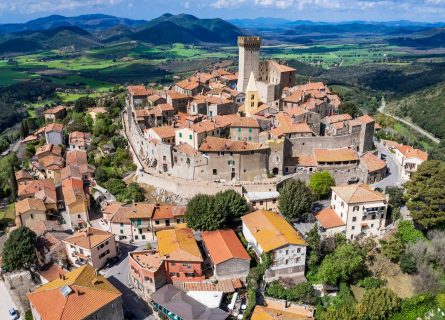
It is impossible not to be captivated by the sweeping vistas of the Alta (Upper) Maremma. Beginning at the port city of Livorno, it continues down to Grosetto in the southwest, incorporating a series of charming towns, rolling hills, Roman ruins, and vine-covered slopes. However, the vineyards of Montecucco are located on the far eastern border of the Maremma, where they share administrative boundaries with the province of Siena. Yet Montecucco feels far away from the well-trodden tourist trails – here, you can investigate superlative gastronomy and exceptional wines at your own pace. It’s the perfect place to wind down after a hectic week exploring Florence and Siena.
Today, approximately 800 hectares are under vine, although only 500 are used to produce wines labeled as DOC or DOCG. The region is heavily planted to Sangiovese and Vermentino, sandwiched between Morellino di Scansano to the south and Montalcino to the northeast. Seven distinct communes, including Cinigiano, Civitella, Campagnatico, Castel del Piano, and Roccalbegna, are entitled to produce Montecucco wine. They flank the southwestern foothills of the Monte Amiata – Italy’s second-largest extinct volcano provides elevation and, more importantly, all the advantages of diurnal temperature variation. With a commanding view of the vineyards of Montalcino (they’re directly opposite), the slopes of Montecucco enjoy a favorable aspect.
Indeed, the two regions share much in common. The climate is quintessentially Mediterranean: very warm and dry summers, mild winters, and an average amount of precipitation (about 316mm per year). And, much like Montalcino, the finest climats are located at higher altitudes, normally about 500 meters above sea level. This helps to cool the vine canopy in the evening, preserving freshness in the wines and avoiding unwieldy alcohol and an inflated pH. For that reason, many of the region’s best whites are made on the higher slopes of the Amiata’s foothills, where acidity levels can be maintained without sacrificing ripeness and fruit.
Adapting to Climate Change
Meanwhile, the area’s volcanic terroirs are rich in minerals and highly suited to producing aromatic white wines and seductive reds. There is a great deal of fragmented sandstone in Montecucco, in addition to igneous soils and bands of clay. The latter provides essential moisture in the summer months, helping to prevent hydric stress and continue grape maturation until the harvest – this used to happen in early fall. However, climate change has impacted the vineyards of Montecucco, just as it has affected winegrowing across Tuscany; early harvests are becoming increasingly common in the zone as growers struggle with unprecedented heatwaves and prolonged periods of drought. Nevertheless, the Montecucco Consortium is confident it can meet these challenges head-on.
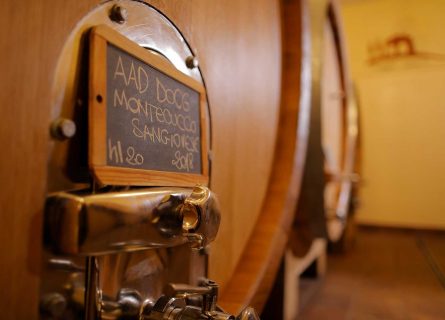
Although the Maremma is generally associated with Bordeaux grape varieties – red and increasingly white – Cabernet Sauvignon and Merlot are not widely planted in Montecucco. Instead, the southern reaches of this expansive region seem better suited to ripening Sangiovese and Vermentino; both grapes continue to thrive in the hills of southwestern Tuscany. Some very elegant and deeply fragrant Sangiovese wines are starting to emerge on soils not unlike those of Montalcino, rising to almost 600 meters above sea level.
Regulations and Evolution
Of course, it’s still relatively early days for Montecucco and its vines. The DOC appellation was not created until 1998, and the superior designation, Montecucco Sangiovese DOCG, was unveiled in 2011. The former stipulates that red Montecucco must contain at least 60 percent Sangiovese, topped with up a range of native and international varieties, including Cabernet Sauvignon and Ciliegiolo. The Rosso Riservas are not released until the wine has been matured for 18 months in wood and six months in bottle. When tasted blind, critics often believe that top-end Chianti Classico is in their glass. After all, the wine’s sour cherry fruit, brisk freshness, and grippy tannins can easily confuse you.
The winemaking, too, can often be compared closely to the methods and techniques employed in Chianti Classico. Many leading estates only use hand-harvested berries and crush the grapes before fermenting them in stainless steel, concrete eggs—the height of fashion—or old oak vats. In the past, Tuscan producers tended to undertake an extended maceration when making Sangiovese wines, extracting a great deal of tannin that could be quite astringent on the mid-palate. Chianti bottled in fiaschi required a rich pasta sauce to make it palatable!
However, many growers now chart a mid-course: a 7-10 day maceration produces balanced wines of depth and elegance with approachable tannins. As elsewhere, opinions differ wildly on the use of new French oak for wine aging; some producers reject wood (both new and used) altogether, preferring to mature their Sangiovese in concrete or amphorae. Nevertheless, most oenologists in Montecucco handle oak with sensitivity and discretion—today, they are making relatively few super-oaky reds.
Prestige of Montecucco Sangiovese DOCG
At the top of the hierarchy, though, stands Montecucco Sangiovese DOCG. According to the appellation framework, every bottle must include at least 90% Sangiovese, aged 17 months (12 in wood), before making it commercially available. Meanwhile, the Riservas are left in barrel for two years (and six months in bottle) before they’re sold. Some very respectable dry whites are also helping to establish Montecucco’s reputation abroad, typically a blend of Trebbiano and/or Vermentino; Grechetto and Malvasia also find their way into some wines. Yet, the single-varietal Vermentinos show the most promise, unsullied by the often drab and unwelcome addition of high-yield Trebbiano. But, there are few surprises in the winemaking department: protective handling, cool fermentation in stainless steel, and judicious filtration are standard practice in 2024.
However, Montecucco is also renowned for its esoteric Occhio di Pernice (partridge eye) wines: a halfway point between a red and dessert wine style. It involves air-dried grapes (they are left on straw mats over the winter) being gently pressed to release a small volume of extremely sweet must. This sticky concoction is then vinified and matured in small wooden casks (Caratelli) for up to a decade, gently oxidizing the wine. Due to the high sugar levels in the juice, the yeast will naturally become ‘exhausted’ and die out before it converts all the glucose to alcohol. The best vintages can live for decades.
Despite being barely a blip on many oenophiles’ radars, Montecucco’s Consorzio organized a landmark 25th-anniversary tasting in London in 2023: a broad range of vintages and producers were available to try. The most impressive, by far, were the Sangiovese reds (blends and single-varietal wines) and the richly aromatic Vermentino whites, sometimes enhanced with a dollop of oak. During the event, it soon became obvious that Montecucco is one of Tuscany’s most promising up-and-coming regions and an underrated source of very affordable and food-friendly wine.
Unique Viticultural Offerings
One year later, Montecucco is still worth getting excited about. Granted, there is a wealth of competition in central Italy; many appellations now produce very high-quality Sangiovese wines, not to mention super-fresh Vermentinos with zip and zing. But, there is something truly world-class about the Sangiovese grown in this corner of southwestern Tuscany – it merges the finesse of Chianti Classico with the force of a young Montalcino Brunello. It is also an excellent destination to visit (just don’t tell anyone else), with unspoiled countryside and very pretty villages that you can almost have to yourself in the spring and fall.
Meanwhile, a talented generation of younger winemakers continue to leave their mark, experimenting with different fermentation techniques and aging regimes. Wines with freshness, style, and substance are their trademark. The only problem is finding them; exports are rising after a long hiatus, albeit the volumes pale compared to Chianti and Montepulciano – you should, however, be persistent. The best of Montecucco makes a fantastic change from Tuscany’s more renowned – and ubiquitous – drops.
Grechetto is a white grape variety native to the central regions of Italy, particularly Umbria, and is used to make a range of wines
Find out moreMalvasia Bianca, a historical grape from Greece, now thrives in Sicily and the Aeolian Islands, producing unique sweet wines.
Find out moreExplore the Renaissance of Sardinian Vermentino: From Forgotten Grape to Crisp Elegance. Discover Now!
Find out moreExperience Trebbiano Toscano's Renaissance: Aromatic & Fresh Bianco Toscana IGT from Petrolo. The Future of Italian White Wine
Find out moreCiliegiolo, a red grape variety from central and northwestern Italy, particularly Tuscany, has seen a revival due to its cherry-like qualities in color and aroma. Previously obscure, it now enhances red wines in Italian DOCs with freshness and liveliness.
Unearthing Sangiovese: Italy's Ancient Grape with a Complex History. Explore its journey from Etruscans to modern-day excellence.
Find out more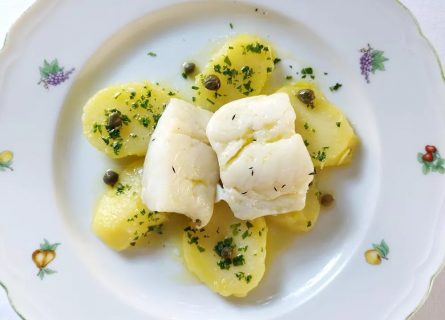
Although nearby Grosetto lacks the culinary cachet of Florence and Siena, it is a lively town (small city) with several excellent restaurants and trattorias. To experience Grosetto at its best, stroll through the centro storico and see what takes your fancy. There are meat and fish options aplenty – all based on seasonal ingredients – with a strong emphasis on farm-to-table cooking. Or, enjoy a glass of something local and nibble on fresh antipasti.
A Gastronomic Guide to the Cusine of Tuscany: Read more

Visit Cortona, Tuscany's hilltop gem with Etruscan roots, Renaissance art, and stunning Val di Chiana views, as seen in 'Under the Tuscan Sun'.
Read more
Explore Florence: A Renaissance marvel with stunning art, architecture, and a rich winemaking legacy, in the heart of Tuscany.
Read more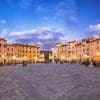
Explore Lucca, a tranquil Tuscan town with 16th-century walls, charming lanes, rich musical history, and picturesque biking trails.
Read more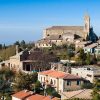
Explore Montalcino's Medieval Charm and Savor Brunello Wine. Discover Italy's Treasured Village on Your Tuscan Journey.
Read more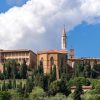
Discover Pienza's Renaissance Charm and Rich History in the Heart of Tuscany's Val d'Orcia. Explore Etruscan Roots, Renaissance Architecture, and Timeless Beauty.
Read more
Discover Pisa's Rich History and La Dolce Vita - Beyond the Leaning Tower. Explore a Cultural Gem in Northern Tuscany.
Read more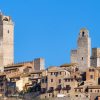
Explore San Gimignano, Tuscany's 'medieval Manhattan', with historic towers, charming streets, fine wines, and a rich, romantic history.
Read more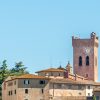
Discover San Miniato, the Tuscan gem: medieval allure, renowned truffle festival, diverse cultural theater, and panoramic valley views.
Read more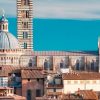
Discover Siena, a Tuscan gem with rich history, stunning medieval architecture, cultural wonders, and proximity to Italy's famous wine regions.
Read more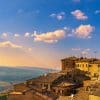
Volterra, 'Little Rome': A Tuscan gem where Etruscan artistry, medieval charm, and Renaissance beauty blend in a picturesque setting.
Read moreIf you would like us to customize an exclusive luxury tour, contact us and let us know your travel plans. We offer luxury food and wine tours for private groups of a minimum two guests. In addition, all of our private, chauffeured tours are available year-round upon request.

